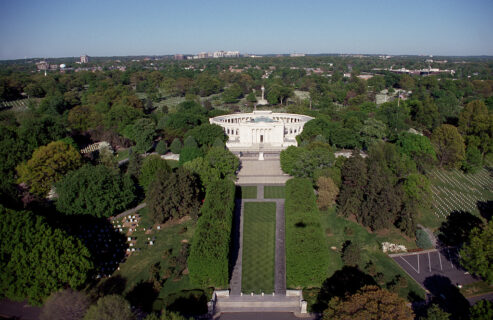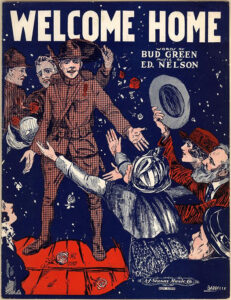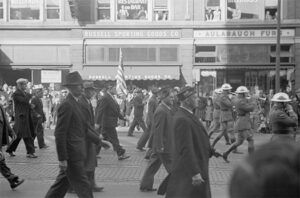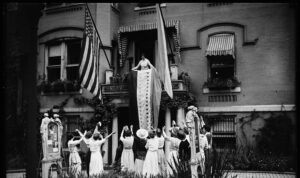
America's Military Holidays
The United States commemorates military service members in different ways, on three separate days each year, two of which are formally recognized as national holidays and widely celebrated. The history and cultural and legal evolution of these days is fascinating, providing perspective on Americans’ views on military service in peacetime and war.
The first to appear on the calendar each year is also the least well-known and celebrated: Armed Forces Day. Created by Secretary of Defense Louis Johnson in 1949, it came on the heels of President Truman’s unification of the armed services under the Department of Defense, which was created in 1947. Armed Forces Day takes place on the third Saturday in May, and exists to show appreciation primarily for those currently serving in the armed forces of the United States. Thus, it is appropriate to thank someone for their service on that day in particular, if they are currently serving.
The next military-focused holiday to come up on the calendar is Memorial Day. In the years immediately after the Civil War, in which over 600,000 Americans died, traditions of remembrance in the form of laying flowers on soldiers’ graves became common throughout the country, north and south. While many towns claim to have been the birthplace of the practice, in 1966 President Lyndon Johnson declared, by presidential proclamation, that Waterloo, New York was the official birthplace, tracing remembrance ceremonies and practices there back to 1866.
What we now call Memorial Day, from its local origins to 1970, came to be celebrated on May 30th of each year, and slowly over time grew in scope to include remembrance of all Americans who died while in military service, especially during war. Congress formally adopted and named it as a national holiday in 1971, and since that year Americans have celebrated it solemnly as a day of remembrance, and less so as the start of summer. It is, therefore, not appropriate to thank a veteran or current member of our armed forces for their service on this day, since it is a day reserved for remembrance of the dead.

Finally, in November, we come to Veterans Day. World War One, or ‘The Great War,’ as it was known at the time, formally ended when the Treaty of Versailles was signed on 19 June 1919. The guns, however, fell silent at 11am on 11 November 1918, when the armistice, agreed to by the warring parties, went into effect. Over 100 years later, the United States celebrates Veterans Day on 11 November.
It’s useful to remember that an armistice is an agreement between warring nations to cease hostilities for the purpose of pursuing a peace treaty, whereas a peace treaty is – it’s hoped – a means by which the issues that led to the war are in some way resolved. An example of the difference between the two has been in effect since 1953 on the Korean peninsula, where North and South Korea only have an armistice, but have yet to conclude a peace treaty to truly end that war.
Definitions aside, the people of the nations involved in World War One saw 11 November 1918 as the end of that awful struggle, and it was in response to this widely-held perspective that President Woodrow Wilson declared, in November 1919, that the 11th day of that month would be one of remembrance, parades, and public observances. Work would temporarily cease at 11am, as people took time to look back on what had happened and what possibilities were created by Allied victory.

Seven years later, in 1926, Congress passed a concurrent resolution recognizing the 11th of November as a day or remembrance, and in May 1938 Congress created 11 November as a national holiday, named “Armistice Day” in honor of those who fought, served, and died in the Great War. Sadly, it would be only a little more than a year before the next World War began, leading to a retitling of that first conflict.
In 1954, during the Eisenhower administration, in response to the scope of American involvement and sacrifice in World War Two, as well as the more recent, albeit far smaller, Korean Conflict, it was decided to change the focus of Armistice Day to one more general in nature, honoring all veterans of American military service. This became the law of the land on 1 June 1954, and was followed in October of that year by the first Veterans Day proclamation, issued by President Eisenhower, himself a veteran of both wars.
Thus, since 1954 the 11th day of the 11th month is set aside as a federal holiday in the United States, for the purpose of remembering those who served in our armed forces, domestic or overseas, in peacetime and war.
Together, these three days aim to inspire Americans to look at the works and sacrifices of their fellow citizens living and dead, current and former, in America’s armed forces.



